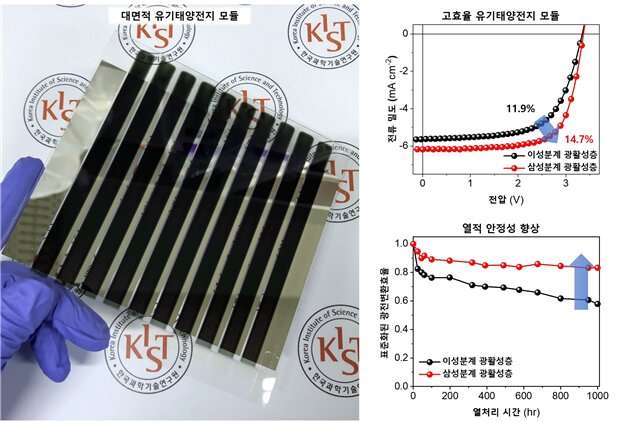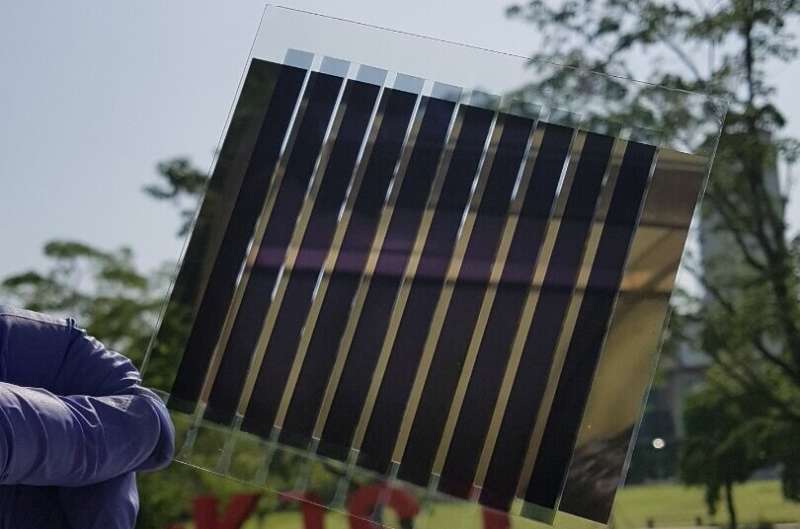
Photo voltaic cell technologies is a prominent clean up electricity supply. In certain, organic and natural photo voltaic cells, part of the 3rd era of photo voltaic cells, are getting consideration as a main technologies for urban photo voltaic ray electricity generation as they can be printed and used to exterior walls or glass home windows of structures. However, the photoactive space that absorbs sunlight and converts it to energy continues to be substantially more compact than .1 cm². In addition, commercialization is obstructed by overall performance and reproducibility troubles that manifest when increasing the cell region to a number of m2 where simple electrical power offer degrees are out there.
A exploration workforce led by Dr. Hae Jung Son of the Sophisticated Photovoltaics Investigation Centre at the Korea Institute of Science and Know-how (KIST President: Seok-Jin Yoon) uncovered the aspects triggering overall performance degradation in large-spot organic photo voltaic cells and introduced the progress of a new polymer additive content for substantial-location, natural and organic photo voltaic mobile technological innovation progress.
The study workforce centered on the photoactive layer’s compositional kind in natural and organic photo voltaic cells and the alternative procedure, which is a section of the natural and organic solar mobile producing procedure. The spin coating system, a resolution approach mostly used in the laboratory research stage, produces a uniform photoactive layer mixture as the solvent evaporates speedily even though the substrate rotates at a significant speed. However, the large-place, constant resolution method developed for industrial use triggered solar mobile general performance deterioration mainly because the solar cell material solution’s solvent evaporation rate was much too sluggish. As a result, undesirable aggregation among the photoactive materials can be formed.

The exploration staff produced a polymer additive that can avoid this phenomenon by interacting with resources inclined to mixture. As a final result, ternary photoactive layers containing polymer additives have been fabricated to prevent aggregation in photoactive layers. Additionally, owing to possible nano-amount structure command, solar mobile functionality advancements and stability stability are acquired versus mild-induced temperature boosts in the course of solar cell procedure. A 14.7% module efficiency was achieved, resulting in a 23.5% overall performance enhance compared to that of the traditional binary technique. Efficiency and security ended up at the same time shown by retaining about 84% initial effectiveness for 1,000 hours, even in an 85℃ heated surroundings.
KIST’s Dr. Son said that they “have gotten nearer to organic and natural photo voltaic cell commercialization by proposing the core principle of a solar cell content capable of high-top quality, substantial-space solution processing,” further expressing that “commercialization via observe-up exploration will make eco-helpful self-sufficient electricity technology feasible that is conveniently applicable to exterior setting up partitions and cars and also utilized as an electrical power supply for cell and IoT gadgets.”
The investigate was printed in Nano Power.
Progress of photovoltaics that can be utilized like paint for real-everyday living application
Sungmin Park et al, Critical purpose of alloyed polymer acceptor for significant effectiveness and steady massive-space organic photovoltaics, Nano Strength (2022). DOI: 10.1016/j.nanoen.2022.107187
Supplied by
Nationwide Investigation Council of Science & Technologies
Citation:
Development of massive space, natural and organic solar cell printing technologies (2022, June 21)
retrieved 1 July 2022
from https://techxplore.com/information/2022-06-large-region-photo voltaic-mobile-technological innovation.html
This document is matter to copyright. Aside from any good working for the reason of private research or investigate, no
section might be reproduced without the composed authorization. The content material is furnished for data uses only.
